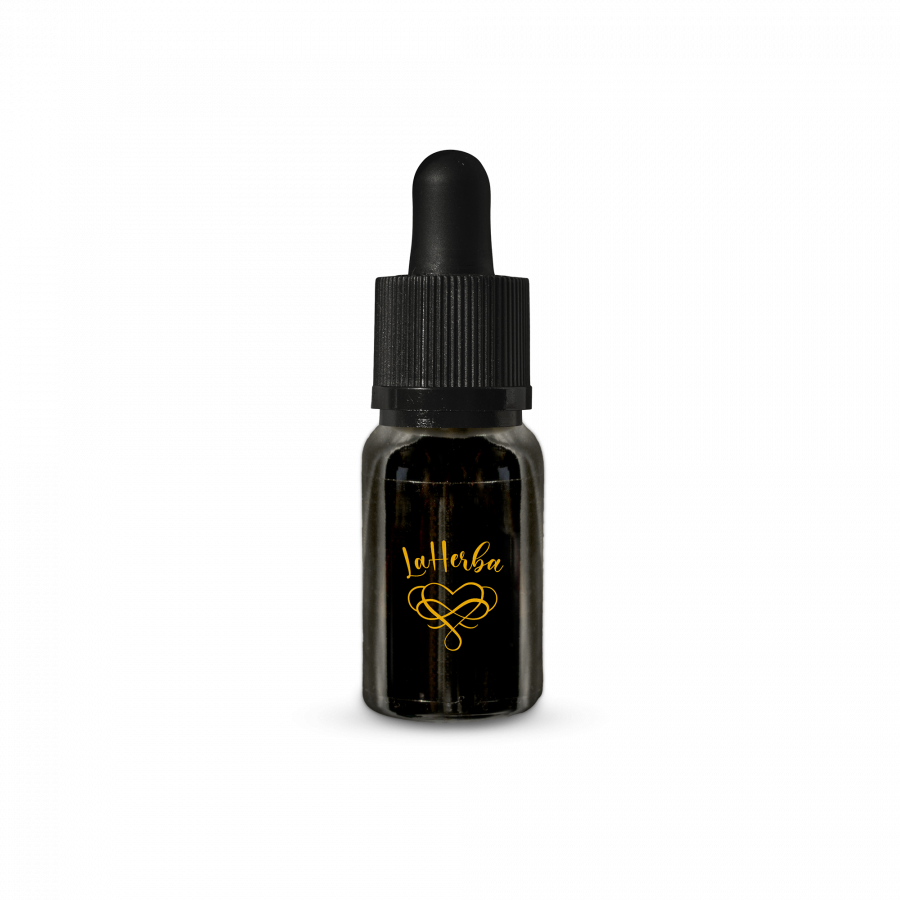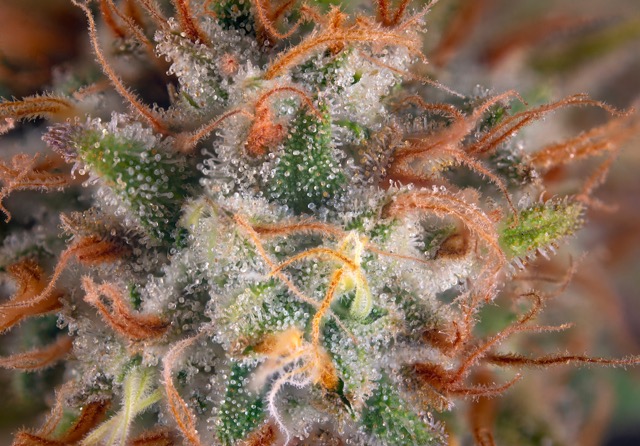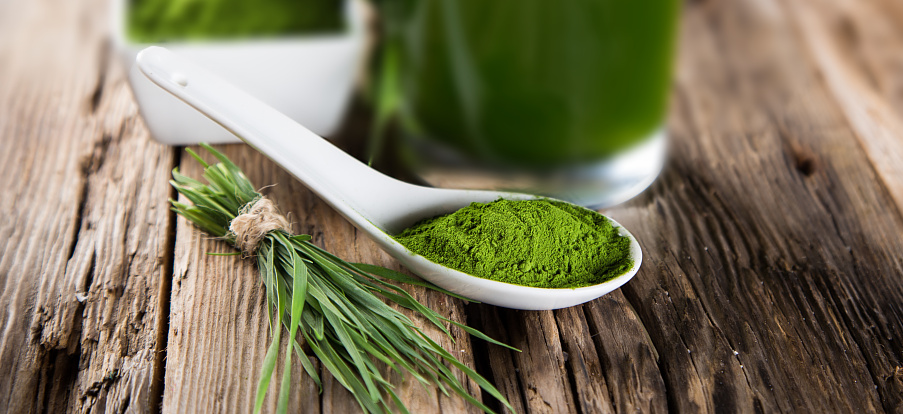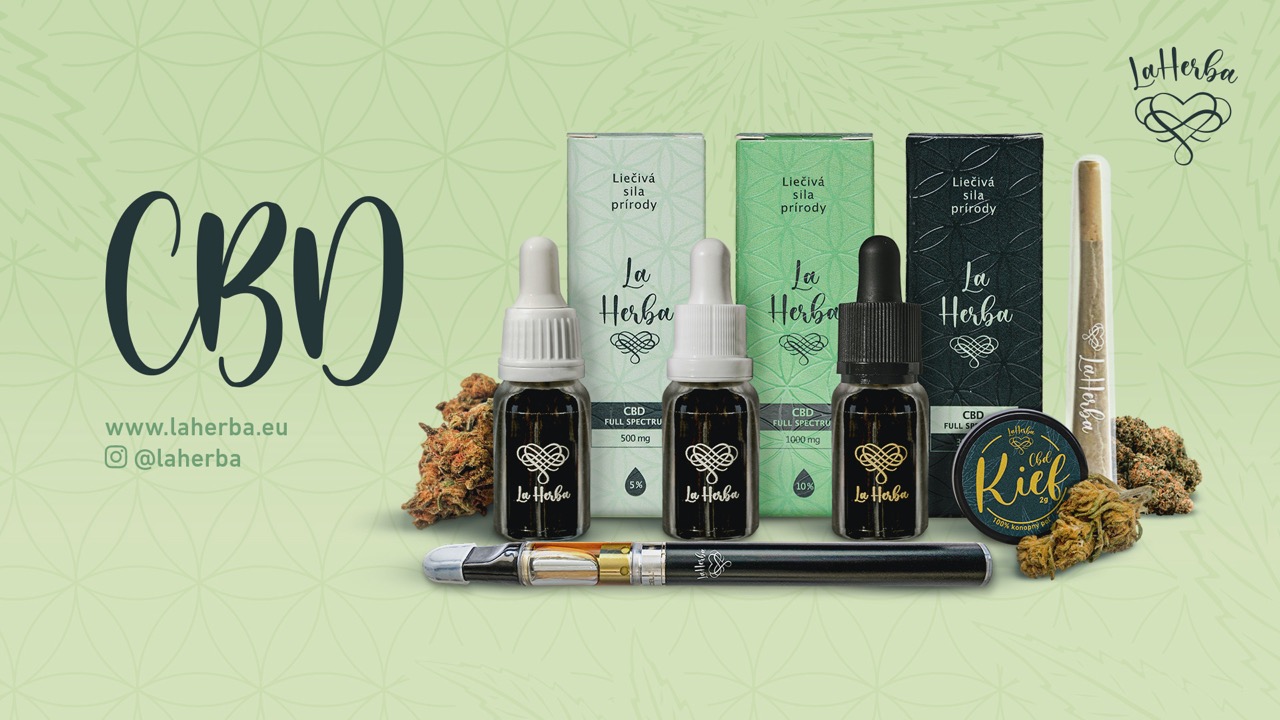
CBD - what is CBD, how to take, how to dose, experience, how to choose?
Cannabinoid CBD: what it is, how it works and works, effects and benefits, properties, in what form to take, importance for the human body and much more.
- A few introductory words about cannabidiol (CBD)
- How does CBD affect the human body?
- CBD oil effects and benefits
- In what form can we receive CBD?
- Therapeutic potential of CBD - serious diseases
- Use and dosage of CBD
- CBDA and CBGA as prevention and treatment of current viruses and infections?
- CBD vs. THC - body and mind
- How to choose CBD oil?
- Hemp and spirituality
- Sativa vs. Indica vs. Ruderalis
- CBD and pregnancy
- Terpenes, terpenoids and flavonoids
- Cannabonoids
- CBD oil experience - we are preparing
- FAQ - frequently asked questions
1. What is CBD?
Cannabidiol, or CBD for short, belongs to a wide group of cannabinoids, currently more than 140 species are known. It is a very effective substance that is found in relatively large quantities in cultivated hemp (Cannabis sativa). CBD has many positive and healing effects for our body, and because of this, CBD has recently been the subject of many medical researches around the world. CBD has no psychoactive effects. Therefore, it is legal almost all over the world.
Cannabidiol, abbreviated to CBD, is a cannabinoid found in the hemp plant. For some time now, it's been linked to wide-ranging health benefits, including the potential to minimize stress, promote sound sleep, and even relieve inflammation and pain. The mode of action of CBD works via the endocannabinoid system (ECS), which every human and every mammal has. This endogenous cannabinoid system is part of the nervous system and the body's own cannabinoid receptors are present throughout the body. The ECS consists of the body's own endocannabinoids and receptors such as CB1 and CB2. The endocannabinoids naturally formed in our body interact with the receptors and influence a variety of functions. In times of increased stress, however, this system can be overwhelmed. The consequences are noticeable imbalances such as sleep disorders, pain, cramps or intestinal diseases. Herbal cannabinoids help you regain your balance.
Research on CBD
Research on CBD as such was not given much attention in the past, because at that time the main subject of investigation was THC with its psychoactive effects. Currently, CBD is very popular worldwide due to its great potential in treatment methods and because it is a purely natural, non-toxic product. In many studies, it has shown a positive effect on common ailments such as headache, joint, muscle pain, stress, acne, barley on the eye, digestive problems, menstrual pain, irregular menstrual cycle. However, CBD has also shown success in more serious diseases such as multiple sclerosis, Crohn's disease, glaucoma, Parkinson's disease, Lyme disease, diabetes and more. We will take a closer look at everything in the following lines.
2. How does CBD affect the human body?
Hemp would be of no benefit to us unless it was to benefit the Endocannabinoid System (ECS). CBD's medicinal benefits depend largely on its ability to regulate this key system, which is involved in everything from mood and sleep support to pain transmission and neurological function.
ECS was only discovered in the late 80's and early 90's. We still only have a basic understanding of how this system works and how it is involved in human health and disease. It is a system that is involved in a whole range of important metabolic processes in our human body. It consists of cannabinoids created by our own body and receptors.
The main task of the endocannabinoid system is to regulate the homeostasis of our organism, and at the same time, it teaches our body to get rid of and recover from stress. Homeostasis is a state where the body is not affected by disease and its natural, normal functioning is enabled. You can find more about ECS, how it works, why we have it, what it consists of in our blog.
3. CBD oil effects and benefits
Thanks to its healing properties, CBD can help our body with the diseases mentioned below:
1. Supports better sleep and falling asleep
2. It can relieve anxiety, depression and stress
3. Soothing inflammation
4. Helps improve cancer-related symptoms
5. It can relieve pain
6. It can help with multiple sclerosis
7. It can relieve nerve pain - neuropathy
8. It can fight addiction
9. It can benefit healthy skin
10. May help with arthritis
11. It will help treat lupus
12. Helps maintain brain health
13. Helps with Alzheimer's disease
14. May act as an antioxidant
15. Antipsychotic effects
16. It can act as a mood enhancer
17. It can benefit heart health
18. May act as an immunomodulator
19. Help improve blood pressure
20. Get rid of diabetes
21. Reduce the risk of obesity
22. Support of digestion
23. Helps protect against bone diseases and bone fractures
24. Soothes epilepsy
25. Also beneficial for dogs, cats or horses
If you are interested, click on the effects and benefits of CBD.
Although we need large studies to verify its effectiveness and side effects, the research appears to be very promising. CBD appears to be a natural adjunct to traditional treatments for a wide variety of medical conditions.
4. In what form can we receive CBD?
The most popular way to take CBD internally is in the form of oil with an extract. Using the extraction method, CBD extract is obtained from the plant, which is added or to another high-quality vegetable oil such as hemp, olive, argan, pumpkin or the most commonly used coconut MCT oil. The effect is not the fastest and it is recommended to use it for a longer period of time, several weeks or months. You can find the right CBD oil for you here.
Popular products containing CBD and CBG include ointments and balms for external use. Hemp ointments are sought after especially for sore muscles and joints, the analgesic effects of CBD relieve symptoms and reduce pain in the affected areas. Ointments are also suitable for burns, bites, swellings, inflammations, acne, cuts, we recommend trying the excellent regeneration balm.
CBD vaporization is coming to the forefront, which is becoming more and more popular. With the use of a vaporizer, we can use dried herbs in a healthier way than by smoking them directly, when burning occurs at a very high temperature. The vapors we inhale do not contain harmful substances and carcinogens produced during combustion.
Other options for using CBD include hemp pollen, also known as brush, CBD dab (crumbles), CBD capsules, CBD cones (flowers), CBD joints, CBD candies, jams and other snacks.
5. Therapeutic potential of CBD
CBD can solve and help with a wide range of health ailments, whether it is sleep, muscle regeneration, psychological relaxation or better concentration during the day. Its benefits can significantly help even with more serious diseases that require special medical care. These diseases also include cancer, glaucoma, HIV/AIDS, muscle spasms, seizures, severe pain, severe nausea and cachexia, or dramatic weight loss and muscle atrophy. In these diseases, CBD helps with the symptoms by being able to alleviate and calm them down. It works on a natural basis and therefore has an advantage over classic pharmacological drugs, which have a greater risk of certain side effects associated with more serious diseases. You can read more about the possible therapeutic effects of CBD in our blog soon.
6. Dosage and use of CBD
The dosage of cannabinoids can be divided into 3 basic ranges, which are effective in different diseases. These three ranges, combined with the user's body weight, will determine the recommended starting dose. The information is from the book Healing with hemp and the use of CBD for medical purposes (Leonard Leinow and Juliana Birnbaumova), publishing house Príroda.)
Microdosing - 0.5-20 mg per day.
Standard doses - 10-100 mg per day.
Macro doses - 50-800 mg per day.
When it comes to dosing, the rule of thumb is less is more, especially when it comes to beginners. Our first tip is to start with a titration, this is the best way to start dosing CBD. It means that you start with a low dose and gradually increase the dose over time until you get the desired effect. This cautious approach is now recommended by many experts. The correct dosage of the oil cannot be determined precisely because every person and every disease is different and the reaction of a person can be different. Take the dose gradually and monitor your body's reaction. It is best to divide the intake of drops into 1-3 times a day.
Examples of CBD dosage for a person weighing 80 kilograms
- To strengthen resistance and balance: 15-50 mg
- Insomnia: 20-70 mg
- Anxiety: 20-50 mg
- Parkinson's disease: 55-160 mg
- Arthritis: 20-60 mg
- Chronic pain: 20 - 65mg
- Migraine: 15-50 mg
- High blood pressure: 20-70 mg
You can find the entire article on dosage and use of CBD in our blog.
How to take CBD drops?
- You can use the drops at any time during the day, but ideally at least 30 minutes before a meal.
- Drop CBD drops under the tongue, wait 60-90 seconds. Then swallow so that the active substance is absorbed. From there it travels into the bloodstream.
- You can divide it into 1-3 times a day, for us the ideal time is in the evening before going to bed.
- The daily recommended dose may vary depending on the type of disease, weight and sensitivity of the person.
- You will not usually feel the effect immediately or on the same day after taking it. You need to take CBD oil for 1 to 2 weeks to replenish the cannabinoids in your body.
- If you are not satisfied with the effect even after 15 days of use, then consider trying a stronger CBD variant.
TIP for use:
You can stand in front of a mirror and pipette the desired amount of CBD drops. Raise the tongue to the roof of the mouth and squeeze the contents of the pipette under the tongue. We wait at least a minute (the longer, the better for more efficient absorption) and then swallow. We don't eat for at least 30 minutes for the best effect, we can drink. You can make it a small ritual in the morning and evening, or at any time during the day, fingers crossed :)
7. CBDA, CBGA as prevention and treatment of current viruses and infections?
The latest research conducted by scientists from the University of Oregon was subsequently published in the Journal of Natural Products and talks about how the compounds in hemp can prevent the occurrence of the currently popular disease. He also talks about how they can reduce his symptoms. Link to the study Cannabinoids block the entry of the virus and its new variants into the cell. These scientists discovered that cannabigerolic acid (CBGA) and cannabidiol acid (CBDA) bind to the spike protein of the virus and thus can block its entry into our cells. Hemp is rich in these cannabinoid acids and they are also found in many hemp extracts. The study's lead author Richard B. van Breeman and other authors said in the study that these acids -- "being bioavailable and with a long history of safe use in humans, have the potential to prevent as well as treat infection." In January 2022, news spread around the world about how cannabigerolic acid (CBGA) and cannabidiol acid (CBDA) in hemp can prevent the coronavirus infection from entering cells and thus causing disease. Manufacturers responded to this information and prepared these unique CBGA and CBDA oils.
8. CBD vs. THC - body and mind
CBD:
- non-psychoactive substance (does not cause changes in consciousness and state of high)
- legal substance throughout Europe, USA, Canada
- induces a balanced state of the organism
- it is used in medicine, e.g. for the treatment of epilepsy
- its effects on depressive and anxiety states are being investigated
THC:
- is a psychoactive substance (causes changes in the state of consciousness and induces a state of high)
- may have side effects
- can cause anxiety, restlessness, dry mouth, increased appetite
- illegal in most countries, which is gradually changing, decriminalizing ...
on prescription in some countries, e.g. for pain relief, Alzheimer's, Parkinson's, epilepsy...
We will bring more on this topic in the future. If you can help us with this, please contact us, thank you.
9. How to choose CBD oil?
1. Find out the extraction method - ethanol, CO2, tetrafluoroethane, etc. We do CO2 extraction right now.
2. Check if it is Fullspectrum, Broadspectrum, Isolated or Synthetic CBD. Our best is Fullspectrum.
3. Make sure of the quality of the oil in which the CBD is dissolved (MCT coconut, hemp, olive, pumpkin, argan). Our best is MCT and hemp.
4. Determine the strength of the CBD. % vs mg, from 5-40 usually.
5. Quality of cannabis flower ... hard to know, but.
You can read what to look for when buying CBD oil in our blog soon.
10. Hemp and spirituality
Everyone uses cannabis in its many forms for different reasons and benefits. Whether for health, relaxation or just out of habit. This does not change the fact that this sacred plant has a key strengthening effect on our consciousness, which our ancestors knew how to use correctly - either for the purpose of spiritual growth or opening the gates beyond the possibilities of normal perception, and there to begin healing the body, both psychological and physical. With this plant, you have a great chance to learn to relax and harmonize with the increasingly powerful energies of your self. Effective procedures can take different forms - either in the form of organization, but also to go beyond the boundaries of organization and give greater depth to everyday simple things that we normally do - creative dance, a walk in the forest, writing, painting or even washing dishes. The key is to bring relaxed focus, breath and attention to this activity, which is often referred to as being fully present in the moment. In calm and controlled intention, the amplifying functions of the plant unfold and the connection deepens. You can read the whole article, the first part Hemp and spirituality in our blog. We are also preparing a second sequel. If you are interested in the topic and would like to add something, contact us by email at laherba@laherba.eu
11. Sativa vs. Indica vs. Hybrid
Have you come across these names dividing the types and effects of cannabis? These varieties are generally believed to be associated with certain psychoactive effects. The Sativa type effect is often described as mentally stimulating and energizing, while the Indica effect is described as relaxing and calming. When you take a sativa, you feel like cleaning the apartment, put on some music and you'll be excited. When you have an indica, you sit down to a good movie, eat a packet of chips (or two), have a good time and then get a good night's sleep. Indica represents more calming.
Subspecies of hemp
Hemp is a botanical genus of plants and although it is classified as one species, Cannabis sativa, at least three different subspecies have been identified and debated for years - Cannabis sativa, Cannabis indica and Cannabis ruderalis. There are also many hybrids, which include many crosses, especially between sativa and indica varieties. Biologist Carl Linnaeus was the first to identify one species in 1753, which he named Cannabis sativa. he described several varieties and thought that they all belonged to the same species. In 1785, the botanist Jean-Baptiste Lamarck identified another species, Cannabis indica. He noticed that C. sativa grows taller, is more fibrous, and has narrow leaves, while C. indica is shorter, has broad leaves, and is more psychoactive. Cannabis indica is a more genetically diverse species and the cultivation of this species is more widespread in the world.
The species C. indica was further divided into four further subspecies:
- Indica
- Afghan
- Chinensis
- Karistanica
How Indica and Sativa affect the body or Ruderalis, we have put together the positive and possible negative side effects in an article in our blog.
12. CBD and pregnancy
Awareness of CBD is growing every day, as you may have noticed many people are talking about its beneficial effects on the body and mind without psychoactive effects. In this article, we will shed some light on the impact of CBD during pregnancy and what benefits it can provide to a woman and her baby during this wonderful period. As we already know, CBD can relieve both acute and chronic pain, it can help us in stressful situations, we can treat ourselves to better quality sleep, and thus it can provide us with better and faster regeneration of our body. In addition, it can be a very good helper even in more serious diseases such as epilepsy, arthritis, diabetes, cardiovascular diseases, and even cancer. If you're pregnant, you may have wondered if CBD (cannabidiol) can provide relief. CBD products are becoming more and more popular. You can find this cannabinoid almost everywhere - food, cosmetics, drinks, nutritional supplements. Some pregnant women have decided to try CBD for relief from:
- Nausea or vomiting from morning sickness
- Anxiety or stress
- Sleep problems
- Pain
You can find more detailed information on the use of CBD during pregnancy in our blog.
13. Terpenes, flavonoids and terpenoids
Terpenes are the aromatic compounds that create the characteristic smell of many plants, such as hemp, pine and lavender, as well as fresh orange peel or lemon. The smell of most plants is caused by a combination of terpenes. In nature, these terpenes protect plants from being consumed by animals or infectious germs. Above all, the study shows that you shouldn't just rely on these labels, but you should look at the specific terpene profile," says Van Velzen. “For example, cannabis labeled as Sativa often contains higher concentrations of individual terpenes with a tea and fruity aroma, while Indica samples generally contain higher concentrations of earthy-smelling terpenes such as myrcene, guaiol, gamma-elemene, and gamma-eudesmol. " It's really these specific, individual terpenes that make the difference. The overall chemical profile, like the genetics, shows no apparent difference between the designations. We also found only a small number of regions in the cannabis genome that likely contribute to the earthy aroma associated with the Indica label," said Van Velzen. It is also notable that different cannabis samples sold under the same name, such as 'Lemon Haze' or 'OG Kush', could be as genetically different from each other as samples with different names. According to the researchers, the industry should be more open about the chemical composition. Show terpene profiles in reality instead of unreliable names like Indica or Sativa. Fortunately, several companies are already doing this, but a standardized measurement and naming convention is still lacking. Reliable information is very important," concludes Van Velzen. More about flavonoids and terpenoids during 2023.
14. Cannabonoids
The word cannabinoid refers to every chemical substance, regardless of structure or origin, that joins the cannabinoid receptors of the body and brain and that have similar effects to those produced by the Cannabis Sativa plant.
The three types of cannabinoids that people use are recreational, medicinal and synthetic.
Research has found that the cannabis plant produces between 80 and 100 cannabinoids and about 300 non-cannabinoid chemicals.1 The two main cannabinoids are delta-9-tetrahydrocannabinol (THC) and cannabidiol (CBD).
The most commonly known of the two is delta-9-tetrahydrocannabinol (THC), which is the chemical that is responsible for the psychoactive effects of cannabis.
The main difference between the two cannabinoids is that THC has strong psychoactive effects, meaning it makes a person ‘high’, whereas CBD is thought to have an anti-psychoactive effect that controls or moderates the ‘high’ caused by the THC. CBD is also thought to reduce some of the other negative effects that people can experience from THC, such as anxiety.
More about cannabinoids in our blog.
Did the article help you? Share it with other people on your Facebook or Instagram, or subscribe to our newsletter. We thank you.
If you are interested in this topic and you are "at home" in it, you would like to add or correct something, contact us by email at laherba@laherba.eu Thank you and have a nice day.
"Healing Power of Hemp"
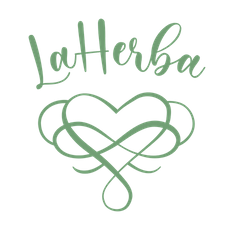
The information provided on this website is for educational purposes only. None of the information presented here is intended as a substitute for a medical diagnosis and such information cannot be considered medical advice or recommended treatment. This website does not support, approve or advocate the use of narcotic and psychotropic substances.
Kambo frog vaccine medicine
Kambô, also known as the “frog vaccine,” is the cutaneous secretion of the frog Philomedusa bicolor, native to the Amazon rainforest. Originally, the use of kambô is associated with the native conc...
The Puyanawa tribe
The Poianauas (Puyanawa) are an indigenous group that lives in the far west of the Brazilian state of Acre, more precisely in the Indigenous Land Poyanawa, located in the municipality of Mancio Lim...
Terpene Talks
Your first question going forward might be, “What’s all the hoopla over terpenes anyway?”
Here’s the “hoopla” in a couple of paragraphs…
We all like to change our moods, especially when we ...
Green barley - Superfood or food of the future
Superfood or food of the future - You will also encounter this attribute with green barley. The truth is that it is nothing new. People recognized the effects of green barley a long time ago. Today...

